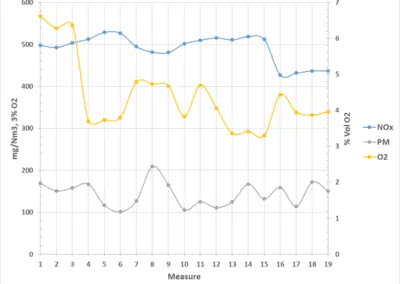Keeps chlorine in balance with SO3
![waste-incinerator1[1]](https://www.pentol.net/wp-content/uploads/2020/11/waste-incinerator11.webp)
During combustion of biomass, chlorine is released in different forms and in different quantities, depending on the type of biomass.
In combination with alkali metals contained in the fuel, alkaline chlorides are formed and cause heavy corrosion in the plant.
To avoid damage to the superheaters, the chlorine conditioning process of Pentol uses SO3 gas to establish a sulfur- chlorine equilibrium. By balancing the chlorine with the SO3, high temperature corrosion can be stopped completely and corrosive deposits on the superheaters are removed.
Sulfur / chlorine balance
![waste-incinerator1[1]](https://www.pentol.net/wp-content/uploads/2020/11/waste-incinerator11.webp)
Pentol’s approach to reduce chlorine corrosion is based on the assumption that the corrosion found on the surfaces of the super heaters is based on the mechanism of high temperature chlorine corrosion.
SO3 is injected to sulfatise the chlorides in the flue gas in the 2nd pass of the boiler. The alkali chlorides are transformed to alkali sulfates. With a high or even full sulfatisation of the alkali chlorides in the flue gas, alkali chlorides can no longer condense on the super heater and take part in the corrosion process. Without the base material the corrosion process is slowed down or even stopped completely.
SO3 is chosen over SO2 because of its high reactivity.
The sulfatisation process is described in the following reactions:
2 KCl + SO3 + H2O –> K2SO4 + 2 HCl
2 KCl + SO3 + 1/2 O2 –> K2SO4 + Cl2
Similar reactions take place with sodium or calcium.
Dosing point
SO3 is ideally injected directly into the combustion air. As an alternative it can also be injected into the second draft, with the limitation that there will be less reaction time.
Fully automatic operation
Low operating cost:
1 kg Sulfur costs approx 0.20 €
Low steam and energy consumption (Exothermal reaction of sulfur combustion is used to heat the system)
Pentol has supplied more than 90 units in Europe.
Satisfied customers can be visited anytime.

Leave us a short feedback
Download PDF
English


